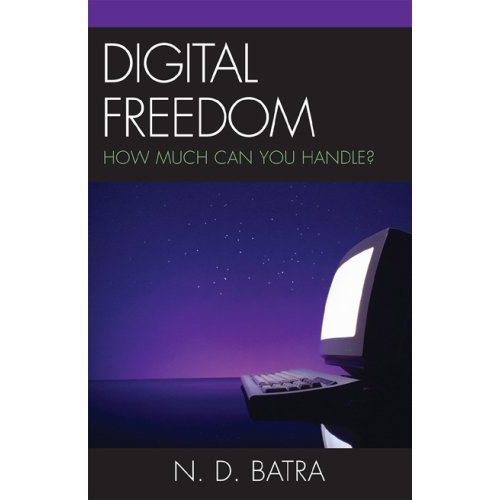From The Statesman
ND Batra
Last Wednesday, the Federal Communications Commission (FCC) approved a plan for a nationwide text messaging system that would alert Americans on their cell phones about terrorist attacks, natural disasters, campus shootings (like the one that occurred in Virginia Tech in 2007), child abductions or a killer on the loose.
The initiative originates from a 2006 federal law, the Warning Alert and Response Network Act (WARN Act) that requires upgrading the national emergency system. Cell phone subscribers won’t be charged for the alert messages they receive from Uncle Sam; nonetheless, they could opt out. Although the wireless industry has endorsed the plan, according to news reports, service providers’ participation is voluntary. Target date for fully implementing the FCC plan is 2010.
Any organisation, private or public, that mass-distributes information instantly can also collect it from its users instantly. Search companies like Google, Yahoo, AOL and others collect and archive huge amounts of personal data from which can be profiled the behaviour of the user. They also cooperate with authoritarian governments as a price for working in their countries, especially when the lure of profits is irresistible.
There are cases of Internet search companies that have inadvertently released from their archives millions of search queries. Even if the names were not released, it would not have been difficult to put together the profile of searcher XYZ, for example, and what was motivating his search. The questions XYZ asks and the searches he makes online or in real life would reveal his mind. Web users everywhere are quietly submitting to whatever brings them a feeling of comfort and certainty. Protests against intrusiveness by the government and businesses into our personal lives have become muted. We are lapsing into a non-obtrusive surveillance society.
Every time there is a terrorist attack text message, we would feel that the government might be right. Online surveillance devices are being increasingly used by businesses to track users when they surf their Websites. Tracking is done inconspicuously and the user can never suspect that he is being watched.
Most of us are familiar with cookies, Web bugs, small software programs the advertisers put on our hard drives to track where we surf so that they can customise the most fitting advertising message for us to achieve target marketing, reaching the right person with right message. But a Web bug can be programmed to collect whatever data is required without the knowledge of the user. When you look at your online financial statement, or a health Website, the digital bug too could be monitoring it. Some companies do inform their visitors about the tracking devices they use and for what purposes. A Web beacon can track whether a particular message, including junk mail, has been opened and acted upon. Any electronic image that is part of a Web page, including a banner ad, can be programmed to act as a beacon and spy on the user.
Companies claim that the information enables them to personalise the surfing experience when a frequent user visits their portal. Users can opt-out, but most of them don’t know whether the option is available; nor do many of them pay attention to the privacy statement. Clandestine observation technologies are not limited to the Net. Several companies are using biometrics, face recognition, radio frequency and global positioning system (GPS) technologies to keep a watch on their properties and track suspects. Many car rental companies in the United States use GPS to keep track of their rental cars. If a car is stolen or is involved in an accident, the company would know the exact location of the car. But can a company withhold information from the police?
Many airports have started using digital fingerprint identification technology to conduct background checks without any protest from employees. Face recognition technology is being extensively used not only in airports but also in ballparks, banks and other business establishments. If a suspect turns up, his face is digitally matched in seconds with the image database. It is not a foolproof system. So far we don’t know how many terrorists have been apprehended by face recognition technology, but the security business is booming in the United States.
The US Customs and some airports are using low-dose X-ray machines, such as Body Search, to electronically scan a person for drugs, bombs and contrabands. Body Search electronically strips a person naked and projects the image on the screen for scrutiny without the person being asked to take her clothes off ~ all in the name of security. Hundreds of air travellers, including women, are randomly subjected to electronic Body Search.
An interesting security tracking technology is the radio-frequency identification tag (RFID), which is attached to a suspect’s baggage as he checks in. The tagged baggage is automatically routed to a security area where it is screened with special cameras and sensors for explosives and other hazardous materials. Depending upon the level danger alert, along with our baggage we too might have to wear radio-frequency ID tags so that we can be monitored as we move from one airport to another, from country to country via GPS. From centralised text messaging on cell phones to radio frequency ID tagging, government and global corporate interests are converging.
Imagine the possibilities ~ good and evil!
What might a democratic country with a base of 300 million cell phones do?
Or think of an authoritarian rising super power texting a message to its captive billions: Beware of the devil in monk’s clothing preaching compassion.
(ND Batra, the author of Digital Freedom, teaches communication and diplomacy at Norwich University)
Tuesday, April 15, 2008
As security increases, would freedom decline?
at Tuesday, April 15, 2008 Posted by Narain D. Batra
Topics
Culture,
Freedom,
Technology
![]()
Subscribe to:
Post Comments (Atom)

No comments:
Post a Comment